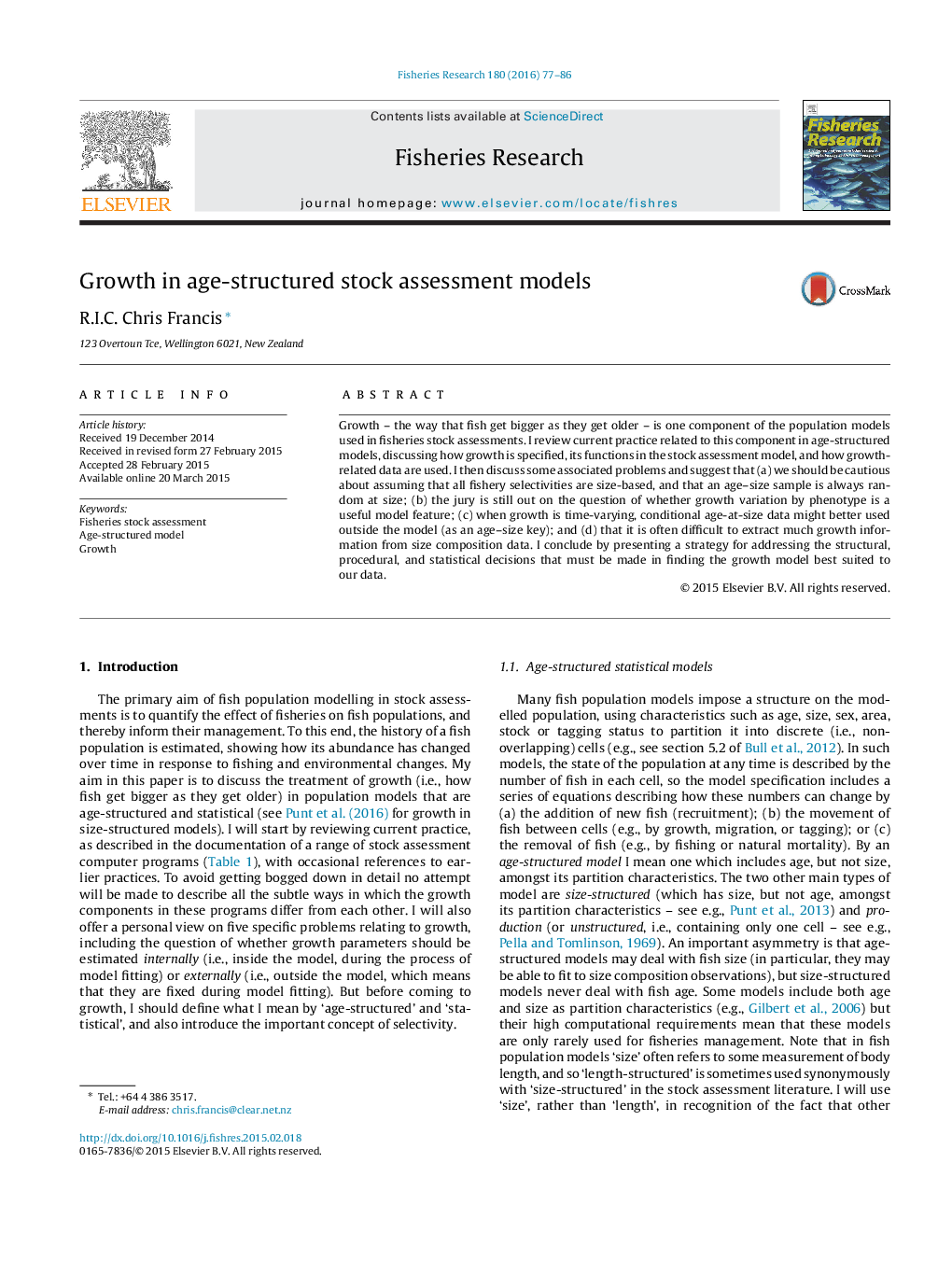| Article ID | Journal | Published Year | Pages | File Type |
|---|---|---|---|---|
| 4542718 | Fisheries Research | 2016 | 10 Pages |
Growth – the way that fish get bigger as they get older – is one component of the population models used in fisheries stock assessments. I review current practice related to this component in age-structured models, discussing how growth is specified, its functions in the stock assessment model, and how growth-related data are used. I then discuss some associated problems and suggest that (a) we should be cautious about assuming that all fishery selectivities are size-based, and that an age–size sample is always random at size; (b) the jury is still out on the question of whether growth variation by phenotype is a useful model feature; (c) when growth is time-varying, conditional age-at-size data might better used outside the model (as an age–size key); and (d) that it is often difficult to extract much growth information from size composition data. I conclude by presenting a strategy for addressing the structural, procedural, and statistical decisions that must be made in finding the growth model best suited to our data.
